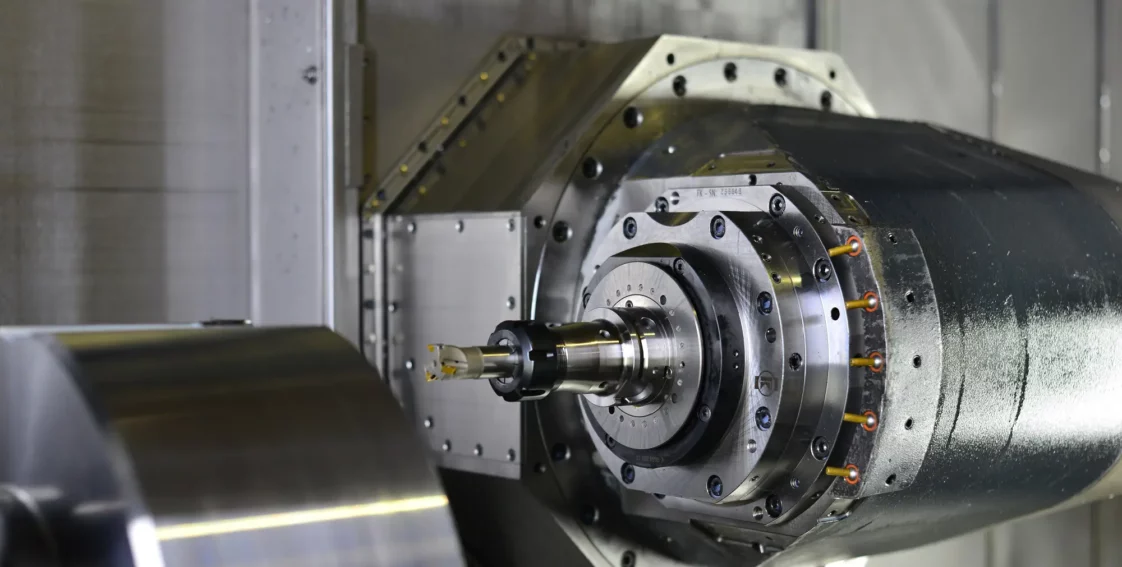
Industry-Specific CNC Spindle Maintenance Tips
Effective CNC spindle maintenance is critical for operational efficiency in many industries, from aerospace and medical to automotive and mold manufacturing. Maintenance practices vary depending on the type of spindle used, the application, and the environment. Adapting maintenance strategies to these specific needs is essential for ensuring long-lasting spindle performance and durability.
In the following sections, we’ll guide you through industry-specific maintenance strategies for CNC spindles.
Automotive
The automotive industry frequently uses high-speed, belt-driven, motorized, and gear-driven CNC spindles. Maintenance requirements vary based on each spindle type.
| Recommended Maintenance | Spindle Type | Frequency |
|---|---|---|
| Lubricate spindle with high-quality oils or greases | All | Weekly. Frequency may be higher in high-speed or heavy-load applications, or in environments with high dust, debris, and/or fluctuating temperatures |
| Clean spindle using solvents or other specialized cleaners | All | Daily |
| Check for alignment to maintain accuracy | All | Monthly |
| Inspect bearings (especially in high-load environments) | All Spindles | Monthly |
| Temperature monitoring to prevent overheating | All Spindles | Weekly |
| Vibration monitoring to check for early wear or signs of imbalance | All Spindles | Monthly (standard conditions) or bi-weekly (high production or high-stress environments) |
| Check the condition of belt | Belt-Driven Spindle | Monthly or more frequently if used continuously or in abrasive conditions |
| Perform a tension check | Belt-Driven Spindle | Monthly or more frequently if used continuously or in abrasive conditions |
| Check the condition of the gear | Gear-Driven Spindles | Monthly. Frequency should increase if the spindle is used in heavy-duty operations or is in extreme conditions |
| Electrical inspections | Motorized Spindles | Annually. Frequency should increase in high-production or harsh environments |
Aerospace
Maintenance of high-speed, motorized, direct-drive, and gear-driven spindles is particularly crucial in the aerospace industry due to the high precision and reliability required in aerospace components. Additionally, advanced materials, like titanium alloys, carbon fiber composites, and high-temperature superalloys, are often used, which can place additional stress on spindles.
| Recommended Maintenance | Spindle Type | Frequency |
|---|---|---|
| Lubrication using specialized lubricants with high thermal stability and resistance to extreme temperatures | All Types | Weekly or more often in continuous-use scenarios |
| Cleaning spindles in a contaminant-free environment using ultrasonic baths or vapor degreasers | All Types | Daily, especially in environments with debris |
| Calibration checks | All Types | Monthly or more frequently in precision-critical tasks |
| Temperature monitoring | All Types | Weekly or more often in high-speed machining |
| Advanced vibration analysis | High-Speed Motorized | Bi-weekly or more often in high-precision environments |
| Material-specific spindle adjustments* | High-Speed Gear-Driven | As needed based on material changes |
| Electrical inspections | Motorized | Bi-annually or more based on usage intensity, spindle speed, and environmental conditions |
*Adjustments can include changing spindle speed, torque, feed rate, and the type of cutting tool used to accommodate the specific material’s hardness, thermal properties, or abrasiveness.
Agriculture
Belt-driven, motorized, high-speed, and gear-driven CNC spindles frequently used in agricultural environments are often exposed to more dust, debris, and fluctuating temperatures, which means more maintenance is needed to ensure their operational efficiency and longevity.
| Recommended Maintenance | Spindle Type | Frequency |
|---|---|---|
| Regular lubrication with heavy-duty lubricants designed to withstand harsh operating conditions | All Types | Weekly or more often in dusty or outdoor environments |
| Cleaning spindles with heavy-duty cleaning agents and detergents, stiff brushes, and/or compressed air | All Types | Daily, especially in environments with dirt and debris |
| Vibration and alignment checks | All Types | Monthly or more frequently in high-use scenarios |
| Bearing inspections | All Types | Monthly or more in harsh conditions |
| Check the condition of the belt | Belt-Driven | Monthly or more frequently in harsh conditions |
| Check the condition of the gear | Gear-Driven | Monthly or more frequently in harsh conditions |
| Electrical inspections | Motorized | Annually (standard) or biannually for intensive operations or in harsh environments |
Medical
Because the medical industry has stringent precision and cleanliness standards, frequent maintenance of high-speed and motorized spindles is not just essential but required.
| Recommended Maintenance | Spindle Type | Frequency |
|---|---|---|
| Regular lubrication using specially formulated, biocompatible, and non-reactive lubricants | All Types | Weekly or more frequently in high-volume operations |
| Sterile cleaning of spindles using isopropyl alcohol, sterile wipes, non-particulate clothes, and other specialized cleaning solutions formulated for the medical industry | All Types | Daily—critical due to strict cleanliness standards |
| Vibration analysis | All Types | Monthly or more frequently in precision-critical operations |
| Temperature monitoring | All Types | Weekly |
| Bearing and alignment checks | All Types | Monthly or more frequently in high-precision tasks |
| Calibration | All Types | Bi-weekly |
| Electrical inspections | Motorized | Quarterly |
Military & Defense
The military and defense sectors have high-stakes applications, so consistent and rigorous maintenance of high-speed, motorized, and heavy-duty spindles is necessary to ensure the accuracy, reliability, and longevity of manufactured parts.
| Recommended Maintenance | Type of Spindle | Frequency |
|---|---|---|
| Lubrication using high-grade lubricants that can withstand high-stress and demanding operational conditions | All Types | Weekly or more often in continuous use scenarios |
| Cleaning the spindles using solvents or other specialized cleaners | All Types | Daily, especially in rugged environments |
| Precision alignment checks | All Types | Monthly or more frequently in precision-critical tasks |
| Vibration analysis | All Types | Monthly or more frequently in high-stress operations |
| Temperature monitoring | All Types | Weekly |
| Inspected for wear or damage | All Types | Monthly or more frequently in harsh conditions |
| Electrical inspections | Motorized | Biannual (standard) or quarterly for high-stress or mission-critical applications |
When Repairs Are Needed
Although maintenance tasks vary by industry, signs of damage are pretty universal.
If you’ve noticed any of the following signs, please schedule spindle repair services as soon as possible:
- Excessive Vibration/Tool Chatter: This can indicate an imbalance, misalignment, or bearing wear.
- Unusual Noises: Listen for grinding, squealing, or clicking noises that may indicate issues with bearings, gears, and other spindle components.
- Poor Surface Finish on Components: Inconsistent finishes or dimensional inaccuracies could indicate imbalance or misalignment.
- Poor Performance: If cuts are not as efficient or tool wear and breakages are becoming more frequent.
- Overheating: Excessive heat buildup could indicate inadequate lubrication, bearing wear, or motor inefficiencies.
- Spindle Is Using More Power: A higher than normal power consumption during spindle operation could indicate mechanical resistance or inefficiencies within the spindle assembly.
Request Repair Services
If you encounter unexpected issues, Superior Spindle is here to help. We’re an industry-leading provider of CNC spindle repairs, retrofits, testing, and assembly services in the United States, Mexico, and Canada. We can service spindles from all major brands for clients in many industries, from medical and aerospace to mold manufacturing.
Our standard repair turnaround is between 10 and 14 business days, but we can offer expedited spindle repairs based on part availability.
Please contact us today to schedule services or visit our website for more resources.
